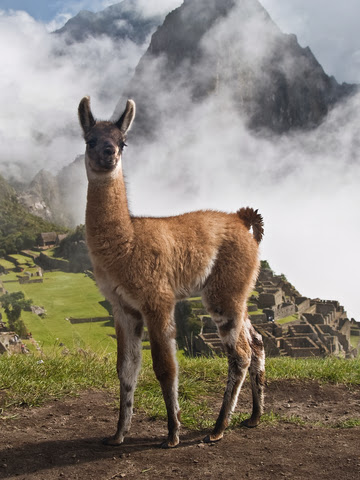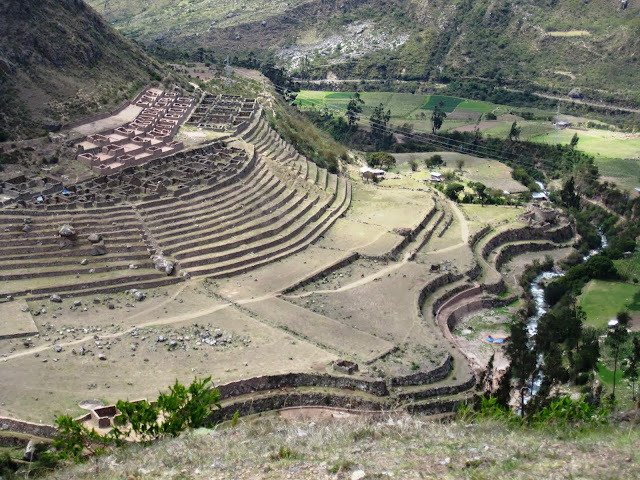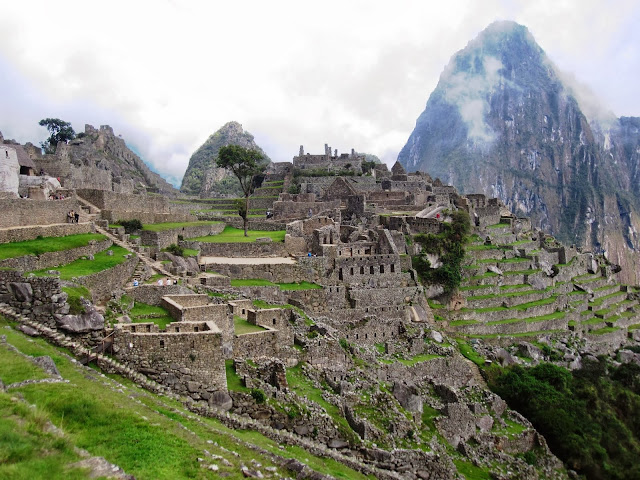Here at Wandering Educators, we are often asked to define cultural travel. My short answer to that:
Cultural travel is deep, local, insightful; always seeking to learn; a way of experiencing a culture from the inside - as a participant, instead of a tourist.
If you want the long answer, let’s sit down over brunch and delve in. When you travel, do you seek meaningful experiences, a chance to learn, a journey to share a culture and community as a participant, rather than a tourist? We do, too. It’s important, in our journeys, to exhibit ethnorelativism and curiosity. Both of those will get us far. But HOW do you find cultural travel opportunities, to get off the beaten path, to find those locals that want to share time with travelers? It’s not that easy, at times. You can try couchsurfing or tripping to meet locals, or attend meetups with people you’ve connected with online in various interest groups. But there has to be more, an easier way to dig into local culture, with connections that we can’t find online.
We’ve long published stories about cultural travel; our educators and writers share incredible personal experiences about learning from locals. I’ve been doing my due diligence, researching and writing on different ways to experience cultural travel in Machu Picchu, as that is where I’d love to visit next.

Custom tour operator SA Luxury Expeditions reviews cultural travel in Machu Picchu, and I turned to them for my research. I am impressed by the academic credentials of their team, and the deep knowledge of culture they’ve spent their lives studying. The founders are local experts, married to Peruvian women, who created a company to share their knowledge and experiences of Peruvian history and culture.
When we delve deeply into cultural travel in Peru, what comes to mind? For me, the topics I’d love to learn more about before visiting are history, culture, and modernization.

Llama at Machu Picchu by Jarnogz via Dreamstime
Recently, SA Luxury Expeditions, reviewed at the Travel Word, answered the question of modernity vs. traditional living. When cultures change, they often do so for the benefit of the locals. However, tourists want to see the old culture (a perfect example of this is the geisha culture in Japan), instead of the new – it is, somehow, more “real” than seeing locals dressed in jeans and tshirts. This can affect the changing face of tourism, and the economic realities of living in tourist places today. One of the founders noted, “if you were to speak to someone that lives tucked away on a mountain in the Andes a full day by llama to the closest market, you may hear a different story about how things like cell phones or solar power are making positive impacts in their daily lives. Modernisation is a very complicated subject and is shrouded in melancholy for the past.”
Modernization is, indeed, a dilemma for both travelers and locals. In a recent article in the New Yorker, entitled Letter from Tamil Nadu: Rush, Akash Kapur delved into the effects of a big road on a small village. While the development was good for many people (Restaurants! Economic opportunities! Cell phones!), the road also caused hardship and death. People and animals were hit by cars and killed. Accidents were common; the noise and pollution and public drunkenness of strangers were surprising and disrupted village life. While most locals benefited from the road, financially, the new ways of living that the road brought completely changed the local culture. Is it for the better? It depends on whom you ask.
The history of Peru includes a variety of cultural influences. There were many indigenous cultures in Peru, before the Incas came and created an empire (and Machu Picchu, but hold on to that thought). Pre-Inca, the most lasting cultures included the Chavìn and the Sechìn; you might recognize the influence of the Chavìn from their art and architecture, which included stylized religious iconography (their jaguar depictions are most familiar to us). More artistic cultures followed, including the Saliner and Paracas (advances in weaving), and the Nazca (those amazing cryptic lines). And then, the Incas. It was they who created Machu Picchu in the 1450s, and ruled an enormous area for about 100 years. And then, fell. What about this powerful culture led it to fall, so quickly, to the Spanish conquistadors? And how does the Incan cultural influence affect Peruvian culture today?
The PanAmerican Highway (connecting South America, top to bottom), was based on the Inca Trail. The Incan farming platforms for terraced agriculture are still used successfully today. Some rural villages speak Quechua, the Incan language. Villagers rely on the llama for transport, as the Incas did 500 years ago. The Incas loved music, and used a pentatonic scale still utilized today.

But back to Machu Picchu. This powerful Incan culture created a lasting monument, and then it lapsed, fell into disrepair, and was overgrown. Then, in 1911, Hiram Bingham III rediscovered Machu Picchu, and changed history – by finding history. He discovered Machu Picchu with the help of a local guide – families were living in the area! In the April 1913 National Geographic, Bingham noted, “The superior character of the stone work, the presence of these splendid edifices, and of what appeared to be an unusually large number of finely constructed stone dwellings, led me to believe that Machu Picchu might prove to be the largest and most important ruin discovered in South America since the days of the Spanish conquest.” Indeed – as photos attest, the discovery was extraordinary.

What was Machu Picchu created for? No one really knows, but it is located atop a peak, which was an excellent strategic location. Many surmise it had religious purposes.
How was it built? With llamas, a dry stone technique, and hard work. The stones were extracted from the plateau on which it sits, and were not so large. Stairways are carved (and there are over 100 of them); the city is built of mostly residences, with a temple and a few public structures. The aqueducts still function. Exploring Machu Picchu, especially at daybreak, can take you back in time.

How can travelers explore local culture while they are visiting Peru? By spending time with locals, by supporting locally sourced food (potatoes – thousands of varieties, including beautiful purple ones; quinoa, one of the world’s most ancient grains, held sacred by the Incas), textiles, and crafts.
When you’re there, hire local experts, and stay in Peruvian-owned accommodations. At Lake Titicaca, visit the Uros Islands, and learn firsthand from locals about living on these unique floating islands. Open your eyes and see the different cultural influences (pre-Inca, Incan, and European) on the art and architecture of Peru, especially in Cuzco.

In the end, cultural travel depends on YOU – discovering what you want to learn, finding the best people to learn from, and opening yourself up to the journey.
All photos courtesy and copyright SA Luxury Expeditions, except where noted
Exploring cultural travel to Machu Picchu, Peru
Posted by: Jessica Voigts
